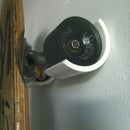Introduction: Make a School Folder From a Cereal Box
How to "repurpose" a cereal box into a school folder.
My daughter is pretty passionate about treating our planet more responsibly. As a way to re-use some material from our recycling bin, we got the idea to try to make her school folders from used cereal boxes. Turns out it's pretty easy. And now her friends want one, too. This instructable will show you how to do it yourself.
Caution:This instructable requires you to cut the cereal box with a sharp knife. Please be very careful when using these tools, they can really hurt you. If you're young enough to be making this for yourself, please ask your parents before you use a sharp knife like this. Better yet, mark the lines and ask them to make your cuts for you.
Step 1: Materials and Tools
Materials:
1 cereal box that is at least 12 inches tall and with a combined width+depth of at least 10 inches - this will be the main jacket of the folder. In this example we're using a 17 ounce Frosted Flakes box that fits just right.
1 cereal box or similar that is at least 5 inches tall and with a combined width+depth of at least 9 inches - this will be cut down and used as the inside panel to hold the papers in.
Glue - White Elmers school glue or something similar
Tools:
Sharp box knife or xacto knife
Long straightedge or yardsitck
Single hole punch
Sharpie marker
Heavy books - to press down the glue joints while drying
Step 2: Open the Boxes Completely
Carefully slip your finger under the flap on the bottom of the large cereal box to open it.
Find the glued seam that runs vertically along one side of the box. Carefully slip your finger under this flap and separate it from the box.
Lay the box flat on the table. Find the thin vertical flap that you just unglued to open the box. Carefully cut that flap off.
Do the same thing for the smaller box.
Step 3: Prepare the Reinforcing Flaps
Mark a line on the open flaps 3/4 of an inch from the top edge fold. Cut all excess material above this line off.
Mark a line on the open flaps 3/4 of an inch from the bottom edge fold. Cut all excess material below this line off.
Mark a line 3/4 of an inch in from the left edge. Turn your knife blade over and carefully score this line so it folds easily.
Mark a line 3/4 of an inch in from the right edge. Turn your knife blade over and carefully score this line so it folds easily.
Step 4: Cut the Jacket Corners and Notches
Using your hole punch, knife and straight edge cut the corners and notch the flaps of the large box as shown.
Step 5: Cut the Panel and Prepare to Assemble
Cut a panel as shown. It should be 4 and 3/8 inches tall and 1/4 inch narrower than the width between the left and right scored folds in the jacket. This makes gluing and folding a lot easier. The center fold should be aligned with the jacket center fold. All other folds should not be aligned with any of the jacket folds.
Using your hole punch, knife and straight edge cut the center slot and notch as shown.
Set the panel on top of the jacket aligned at the center fold with the top edge aligned with the horizontal cut in the side flaps.
Step 6: Glue Top and Bottom Flaps
Put an layer of glue on the top flap. Fold it down and put some heavy books on top of it until it dries completely.
Put a layer of glue on the bottom flap. Fold it up onto the panel and press it down.
Carefully flip the bottom panel toward you, face down on the table. Put some heavy books on top of it until it dries completely.
Step 7: Glue Side Flaps
Once the top and bottom flaps are completely dry, put an layer of glue on the left and right flaps.
Fold them down and put some heavy books on top until they dry completely.
When they are dry, check to make you have not leaked glue behind the panel that would get in the way of the papers. Gently slip your finger between the panel and jacket to free it if it was accidently glued.
Step 8: You’re Done
Way to go!
You have successfully recycled what was waste cardboard into a useful school folder. Now tuck your homework in there and carry it to school knowing it's good for you and the planet.
Step 9: A Couple Notes
Folders can be made with the colored side or the plain brown side on the outside of the folder. Brown side out they can be personalized with pencils, markers and such. Colored side out they just look neat.
Always score the inside of a flap, otherwise the folder will split along the score lines.
If you decide to go crazy, pull the little bags of cereal out of all the cereal boxes in the pantry and make them all into folders be aware that the size of the folders will vary with the size of the box. You can cut down the flattened boxes to be all the same size if you're interested in having them all the folders same size.
The punched holes at the corners and notches make your folder not split or tear as easily and last longer.
Participated in the
Converse Back to School in Style Contest













